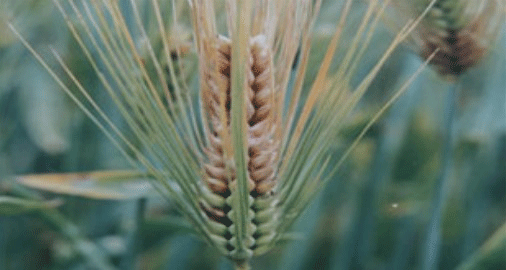Managing Fusarium Head Blight in Wheat and Barley: Best Practices for 2025 Growing Season
As spring advances, cereal producers in regions like Yeongam County, South Korea, are being urged to stay vigilant against Fusarium head blight (FHB)—a devastating fungal disease that commonly strikes wheat and barley during the heading to early grain-filling stages. This period typically occurs between mid-April and May, coinciding with seasonal rainfall and increased humidity.
Why Fusarium Is a Growing Concern
FHB thrives under wet and humid conditions, particularly when:
- Rainfall occurs for three or more consecutive days
- Relative humidity exceeds 80%
- Temperatures remain between 20–30°C (68–86°F)
When infected, grains develop discolored glumes, often turning dark brown or pink, as Fusarium fungi colonize the spikes. The damage doesn’t stop at visual loss—mycotoxins such as deoxynivalenol (DON) are produced, posing serious health risks to humans and livestock. These toxins are resistant to processing and heat, making prevention the only effective defense.
Preventive Measures for FHB Control
To minimize the risk of FHB, experts at the Yeongam Agricultural Technology Center recommend a two-pronged strategy:
- Chemical Control:
Apply registered fungicides such as:- Difenoconazole
- Propiconazole
- Captan WP (wettable powder)
These should be sprayed 2–3 times during and shortly after heading, especially if rain is forecasted. Always follow pesticide safety and timing guidelines to ensure effectiveness and food safety.
- Cultural Practices:
- Improve field drainage to prevent humidity buildup.
- Avoid dense planting that restricts airflow.
- Remove or incorporate crop residues after harvest to reduce overwintering fungal spores.
According to recent findings from the Rural Development Administration (RDA) in Korea and similar studies by international institutions like USDA ARS, integrated disease management—including fungicide application and agronomic adjustments—can reduce FHB infection by up to 60% under high-risk conditions.
What’s at Stake?
South Korea imports more than 90% of its wheat, making local wheat and barley production vital for food security. However, if FHB is not properly managed, yield losses can reach 10–50%, and entire harvests can be rejected due to mycotoxin levels exceeding legal limits.
As climate volatility increases, so does the risk of Fusarium head blight in cereal crops. Farmers and agronomists must prioritize timely monitoring, weather-based spraying, and field hygiene to reduce infection and safeguard both yield and food safety. With strong management, the impact of FHB can be minimized—protecting crops, profits, and consumers alike.
Error





